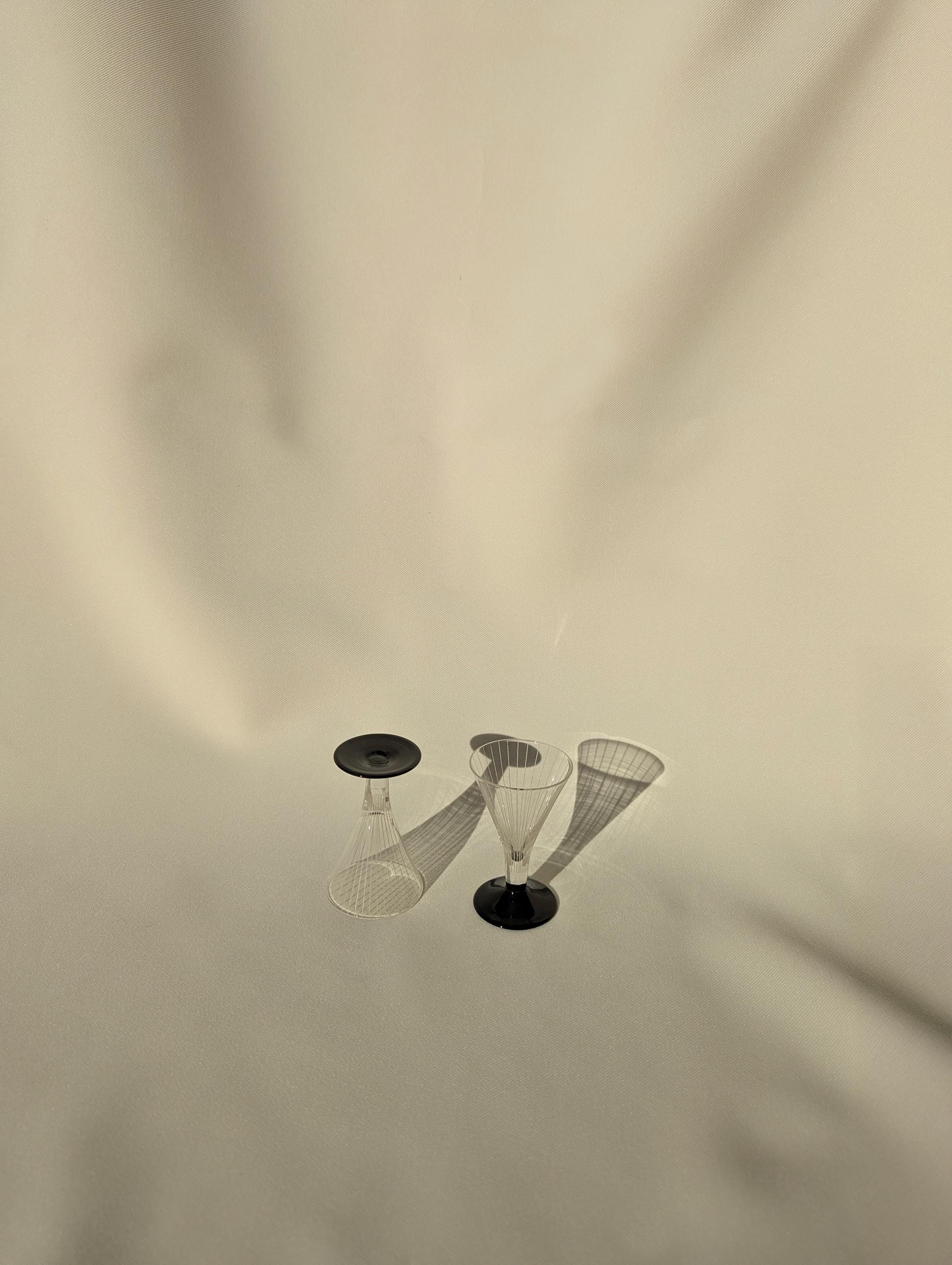When you think of Art Deco, your mind likely jumps to the roaring ‘20s—flapper dresses, skyscrapers, and symmetrical everything. But Germany’s dance with Deco was a little more layered. Between 1940 and 1960, Art Deco didn't disappear—it morphed, quietly sidestepping political constraints and later re-emerging with modernist swagger. One foot in nostalgia, the other in post-war reinvention. And yes, this brings us to a certain black-and-white shot glass that’s giving main character energy—but more on that in a moment.
Art Deco, Interrupted
By 1940, Deco’s golden age had already peaked. The Nazis had suppressed avant-garde styles in favour of neoclassical and “pure” German design. Art Deco—with its jazzy curves and outsider flair—was quietly sidelined. But while the Bauhaus was shuttered and minimalism enforced, some Deco motifs lived on in household objects: streamlined teapots, geometric cutlery, and yes—even glassware with just enough flair to slip under the radar. These pieces didn’t scream luxury; they whispered elegance. Deco was no longer just for ballrooms and grand hotels—it made its home on sideboards and in modest kitchens, reinventing itself with every clink of porcelain.
The 1950s Comeback
Fast-forward past the war, and you have a West Germany ready to rebuild and restyle. The 1950s ushered in a design renaissance. Mid-Century Modern and softened Deco walked hand in hand—less Gatsby, more “cocktail hour with chrome legs.” Ceramics and barware from this era are particularly telling. Functional yet beautiful, they often featured Deco’s signature symmetry with pared-back colour palettes—clean lines, elegant shapes, and a few flourishes of gold or monochrome drama. Enter: our black and white shot glass. With its stepped design, sharp silhouette, and stark colour contrast, it’s a textbook example of late-period Deco-meets-modernism. It’s compact sophistication—a little toast to style surviving history. This isn’t just a shot glass. It’s a time capsule. Imagine it sitting on a 1950s German drinks trolley, next to a crystal decanter, perhaps catching the light at a house party soundtracked by swing records. It’s the kind of piece that makes a shelf feel intentional and a bar cart feel like a scene.
Deco’s Quiet Triumph
While East Germany leaned more toward practical forms, West Germany embraced personality. Think angular glass ashtrays, velvet-lined jewellery boxes, and cocktail glasses that felt a bit glamorous even if they were filled with budget schnapps. Deco filtered through everyday life—not flashy, but undeniably present.
Why It Still Feels Fresh
Today, collectors and design lovers are rediscovering the understated elegance of post-war German Deco. It’s not just about nostalgia—it’s about craftsmanship, mood, and mixing old-world charm with today’s spaces. So the next time you pour a sip into that black and white shot glass, remember: you’re not just serving a drink—you’re serving a little slice of design history. Cheers to that.

